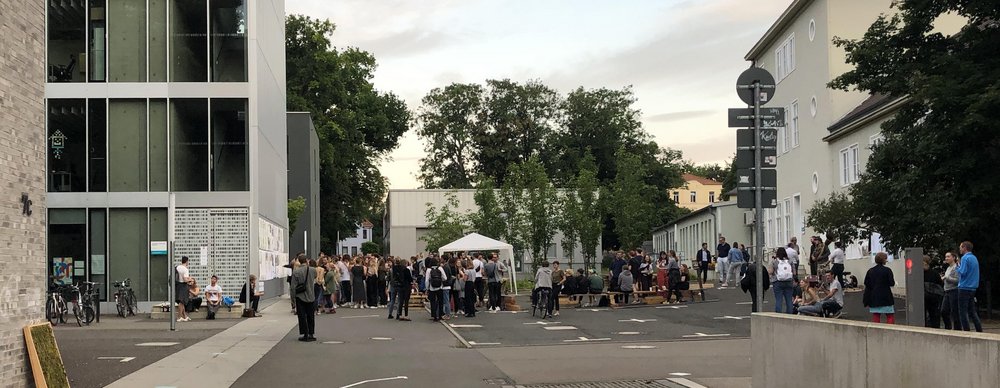

Campus Transformation
UNIVERSITÄT UND KLIMAWANDEL
Die Folgen des Klimawandels werden immer deutlicher, die Nachrichten über Fluten und Brände häufen sich. Viele Menschen reagieren, indem sie weniger fliegen, weniger Auto fahren oder weniger Fleisch essen. Es reicht jedoch nicht, das individuelle Verhalten zu verändern, denn der Klimawandel ist ein globales Problem, das nur global, also politisch zu lösen ist. Viele Regierungen aber tun nicht genug oder tun gar nichts. Wenn das Problem politisch nicht gelöst wird und individuell nicht zu lösen ist, entsteht zwangsläufig ein Gefühl der Ohnmacht.
Die Strategie der Leuchttürme
Zwischen der Weltpolitik und der Welt des Individuums aber gibt es viel Patz, in dem zahlreiche Initiativen, Akteuren, Unternehmen und Städten aktiv sind. Sie zeigen auf inspirierende Weise, wie ein Leben und Wirtschaften ohne weitere CO2-Emissionen gelingen kann.
Der Campus als Ausstellung und die Uni als Multiplikator
Bisher ist die Bauhaus-Universität kein Leuchtturm der Nachhaltigkeit. Aber mit unserer Expertise und Geschichte sind wir prädestiniert, um als kleine Institution große Wirkung zu entfalten. Die Marke Bauhaus ist weltbekannt, wir bilden tausende von Studierenden aus und werden von Gästen aus der ganzen Welt besucht. Mit unserem Campus können wir die Bauhaus-Uni zum Multiplikator machen und zeigen, dass Dekarbonisierung nicht nur funktionieren, sondern auch gut aussehen kann.
The southern grounds of the Bauhaus University essentially consist of a large car park. It was built only a few years ago, together with a few new buildings and an underground parking garage. Several hundred square metres of green space were sealed in the process. The result is a dead area, asphalted right up to the edges of the buildings.
In the seventies, places like this sparked off criticism of car-oriented cities, land grabbing and environmental destruction. Since the 1980s, traffic deconstruction, unsealing and greening have been part of the standard repertoire in architecture and urban development. In 2002, almost twenty years ago, the German government decided to reduce daily land consumption to thirty hectares by 2020. And in 2014, the Bauhaus University, which refers to a school that was far ahead of its time, is building a parking area for more than a hundred cars that embodies everything that for decades has been recognised as wrong and harmful.
If the Thuringia and the Bauhaus University appear to be backward and outdated in their building practices here, they are only victims of a planning practice that has taken on a life of its own and whose outcome is not actually desired by any of the actors. A cascade of laws, ordinances and statutes, the substance of which dates back to the 1970s, leads as if by magic to the creation of more than a hundred parking spaces that are already not needed at the time of planning. Even at full capacity and in the middle of the semester, the Bauhaus car park is never more than half full.
If something is so wrong, it is all the more satisfying to create a halfway reasonable state of affairs. The absurdity of the status quo must even be seen as a gift for a new planning. A better object for a rebuild is hard to find.
To remove only the parking spaces and the asphalt would be to remedy only one grievance. The goal is to turn the car park into a campus. The "green research campus" (Jörg Londong) should be available to all members and visitors of the university, it should offer space for experiments, experimental buildings and prototypes, for art and architecture, for sports and doing nothing.
In addition to its practical use, the new campus must also become part of a strategy for a climate-neutral university.
